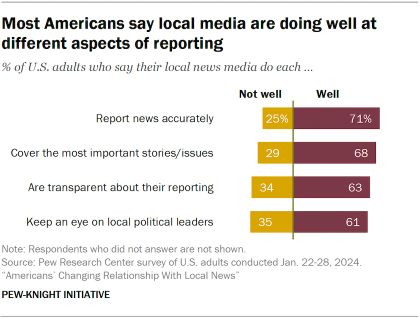The resilience of traditional media in the digital age: how newspapers and magazines are adapting and thriving

Opinion
Despite the dominance of digital platforms, traditional media like newspapers and magazines remain resilient. Rather than fading away, they’ve adapted to the digital era by maintaining trust, upholding editorial standards, and offering a unique, tangible experience that digital content often lacks
Trust in traditional media
One of the most significant assets traditional media holds is trust. Newspapers, broadcast networks, and magazines have spent decades, if not centuries, cultivating a reputation for journalistic integrity. They adhere to strict editorial guidelines that ensure the content they produce is well-researched, accurate, and credible. This contrasts sharply with the digital world, where the spread of misinformation and fake news has become a rampant issue.
As social media platforms and other online outlets grapple with the explosion of self-proclaimed journalists and influencers, traditional media remains a dependable source of in-depth information, particularly on critical topics such as healthcare, finance, and international affairs. Readers still turn to established outlets when they want content that is thoroughly vetted and reliable, making traditional media a vital player in today’s information ecosystem.
A recent study by the Pew Research Center found that the majority of Americans (71%) think that local news outlets report news accurately.

An immersive experience for readers
Beyond trust, print media offers something unique that digital platforms often fail to replicate—a tangible, immersive reading experience. While online news consumption is characterized by endless scrolling and fleeting attention spans, print media invites readers to slow down and engage deeply with the content. There is a physical connection that comes with holding a magazine or newspaper, flipping through its pages, and savoring the stories in a distraction-free environment.
This immersive experience is especially appealing to readers who feel overwhelmed by the constant barrage of information online. In a world where attention is divided among various tabs, notifications, and multimedia, traditional print offers a respite—a space for thoughtful engagement with long-form content. This focused attention benefits advertisers as well, as readers are more likely to fully absorb and engage with advertisements placed alongside trusted, well-crafted content, increasing their effectiveness.
Adapting to a changing landscape
While print publications still offer unique advantages, they have also had to adapt to a digital-first world. Many newspapers and magazines have developed robust digital strategies, blending the best of both worlds. Online versions of traditional outlets now offer interactive features, multimedia content, and real-time updates, catering to the needs of a tech-savvy audience.
In addition to expanding their digital presence, traditional media outlets have also embraced new ways to monetize their content. Paywalls, subscription models, and exclusive online features have become commonplace, allowing these publications to maintain a steady revenue stream despite declining print sales. Moreover, many traditional media companies have expanded into areas like podcasts, newsletters, and social media to stay connected with their audiences.
The future of traditional media
Far from being left behind, traditional media has demonstrated its resilience in the face of digital disruption. By continuing to emphasize trust, offering a unique reading experience, and adapting to the changing landscape, newspapers and magazines remain relevant in the digital age. Their ability to evolve while staying true to their core values ensures that they will continue to thrive, even in a media environment that is increasingly dominated by digital platforms.
As we move forward, the balance between digital innovation and journalistic integrity will be key to the continued success of traditional media. As Information has become more accessible than ever, the value of credible, thoroughly researched journalism remains paramount, and traditional media continues to be a cornerstone of that trust.
Read more

Make fewer ads: Why the future of advertising depends on better data strategies
There’s a misconception that planning fewer ads in order to reduce waste will lead to poorer results. But with intelligent modelling, strategic data partnerships and more metrics available, we can make ads more efficient and more effective.

À lire plus tard
Vous devez être inscrit pour ajouter cet article à votre liste de lecture
S'inscrire Déjà inscrit ? Connectez-vous








